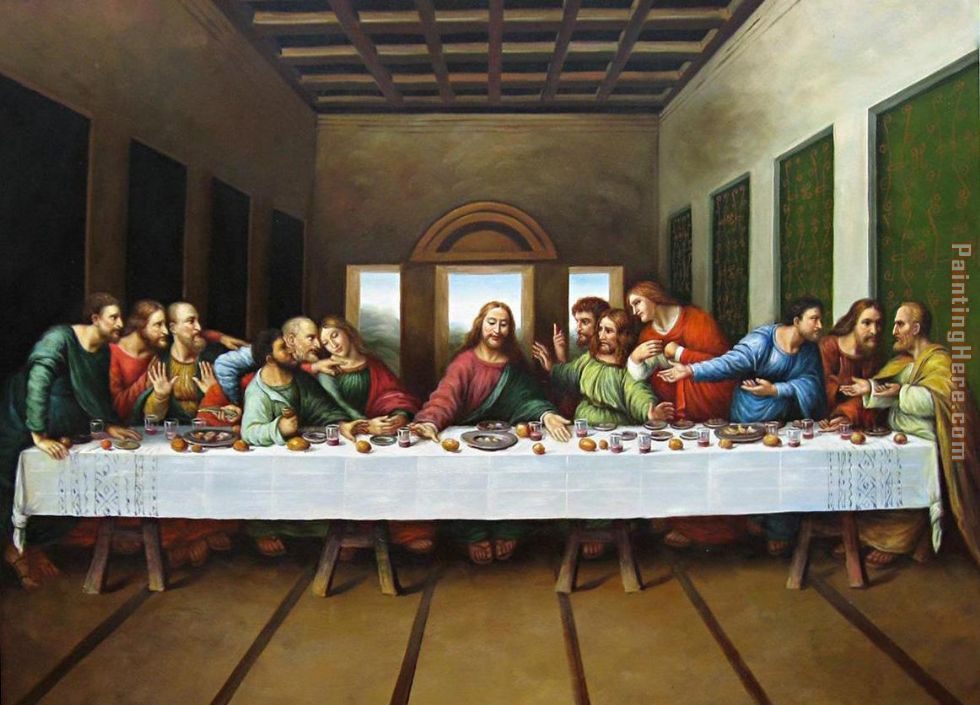How can art be used to raise awareness of problems in society? There are many methods artists can pursue to address social issues, but for Kenneth Tin-Kin Hung, the answer lies in animation and digital collages.

Kenneth Tin-Kin Hung
Kenneth Tin-Kin Hung is a new media artist who specializes in creating digital collages that combines historical and popular culture references with images relating to current events in order to depict contemporary societal problems. In fact, Mary Flanagan, my professor for New Media Theories and Practices at Dartmouth College, explained that “recreating and remixing an old master artist’s artwork is a common theme in art history and contemporary art.” According to Hung, his main purpose in creating digital collages is to “explore the nature of digital communication while touching on issues such as identity, politics, sexuality and power,” as stated on his personal website. One example of Hung’s work, titled “The Fast Supper” is shown here:
In this piece, Hung satirizes the famous “Last Supper” painting by Leonardo da Vinci, which depicts Jesus Christ and his twelve disciples having their last supper before his crucifixion. Hung’s digital collage depicts Jesus consuming large amounts of fast food and unhealthy snacks, growing more and more obese until he overinflates and explodes. In the background, the epic orchestra song of Fortuna Imperatrix Mundi plays as Jesus wolfs down his food.

The unedited Last Supper painting
Obviously, this parody may be very offensive to those who feel great reverence for the Christian religion, but that controversial nature is one of the most effective aspects of the work. By choosing to satirize such a revered and sacred event, Hung is attempting to emphasize the equality in magnitude of the dire situation American society faces regarding obesity—one third of Americans are categorized as “obese”. Christianity is the most popular religion in America, practiced by over 78% of the theist population. In this piece, Hung parallels the pervasiveness of Christianity in our everyday lives with the ubiquitous nature of fast food in contemporary American society. Jesus Christ in this digital artwork can be interpreted as the representative of the United States itself, since the logos of famous fast food chains have been replaced by Christian symbols: KFC is replaced with JFC, presumably meaning “Jesus Fried Chicken”; Coca-Cola is replaced with “Jesus Christ”; and the McDonald’s French fries container has a cross on it. These examples of modern-day fast food reflect the “proliferation of imagery in a media society,” as proposed by Christiane Paul, the author of Digital Art. The reason these examples of fast food are so intuitive to us is that with the massive advertising campaigns large food corporations such as McDonald’s, KFC, and Coca-Cola run, the images of their products have made the “transition from mere representation to branding, in which [the images] are inscribed with a concept or value” (Paul). Hung is suggesting that our present culture is so dependent upon industrialized and artificially created fast food that we almost treat our penchant for consuming these products as an official way of life, a religion. Using the explosion of Jesus Christ at the end of the animated clip, Hung is attempting to warn Americans that unless we change our eating habits and stop our dependency on fat, greasy foods, we will generate health problems of enormous proportions as a population and cause America’s demise.
The way in which Kenneth Tin-Kin Hung combines the use of a collage, animation, and music to create “The Fast Supper” epitomizes the flexibility of digital media in allowing artists to aggregate different sources of technology to create works of art. The animated collage by itself would only be effective to a certain extent; however, with the combination of music, which creates a sense of urgency and impending doom, the audience is able to better appreciate the gravity of the obesity situation in America. One of the major merits of this piece of work is that it is available to anyone around the world with Internet access. “The Fast Supper” can be found on YouTube, via a link from Hung’s personal site. This ease of access makes “The Fast Supper” a superior means of conveying messages about society compared to any other methods. Also, in regards to audience exposure and costs, digital media is far more effective than traditional approaches of spreading social awareness through making speeches or running advertising campaigns—once the work is posted online, potentially hundreds of millions of viewers have access to it, and it costs nothing to post the work via video hosting sites such as YouTube. Hence, in this day and age, the fusion of digital media and art proves to be a highly effective tool to convey messages raising social awareness. Art is an increasingly popular tool to promote social or political causes, serving more than just as an aesthetic pleasure.
References:
http://fitmodelunion.com/malemodels/kenneth/
http://www.mos.org/leonardo/bio.html
http://www.cdc.gov/obesity/data/trends.html
http://religions.pewforum.org/reports
http://www.paintinghere.com/painting/original_picture_of_the_last_supper_3291.html
http://www.merriam-webster.com/dictionary/collage
http://www.ucpress.edu/content/chapters/10362.ch01.pdf
http://www.thamesandhudson.com/9780500203989.html
Paul, Christiane. Digital Art. New York: Thames & Hudson, 2003.
Flanagan, Mary

